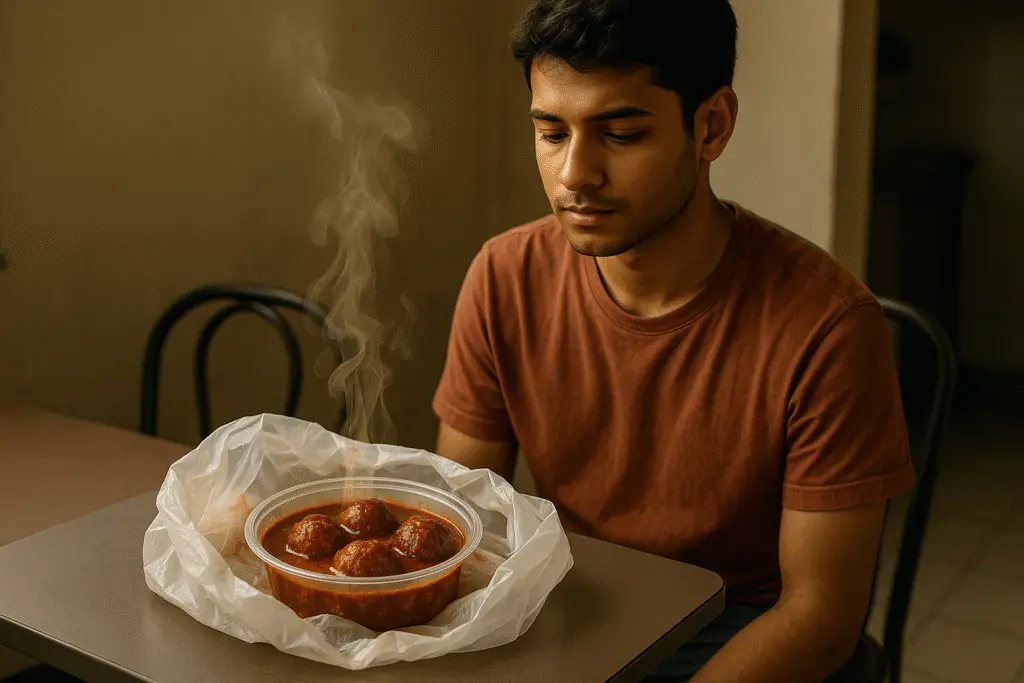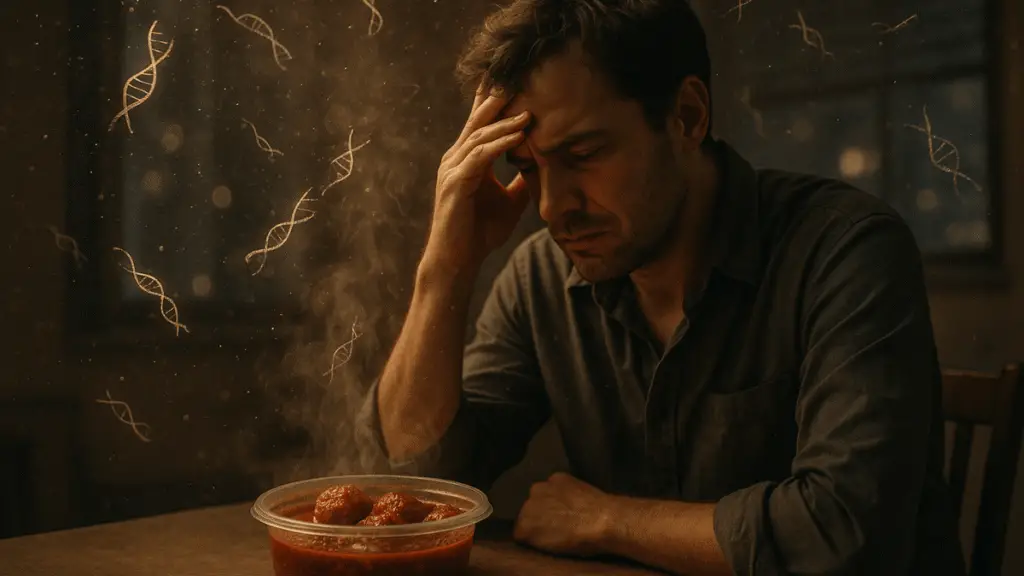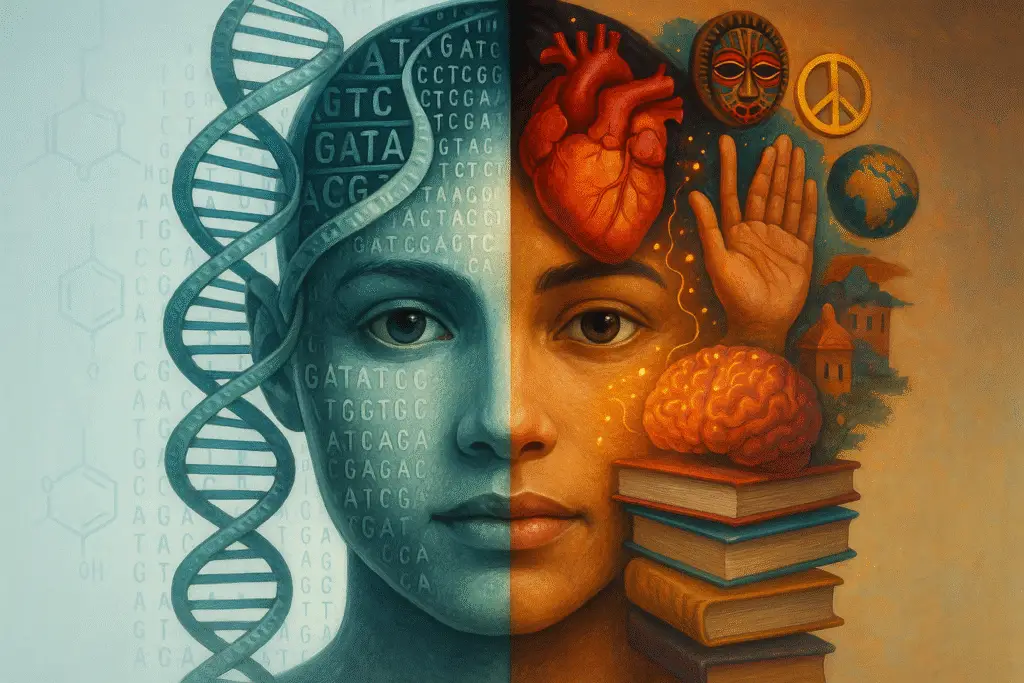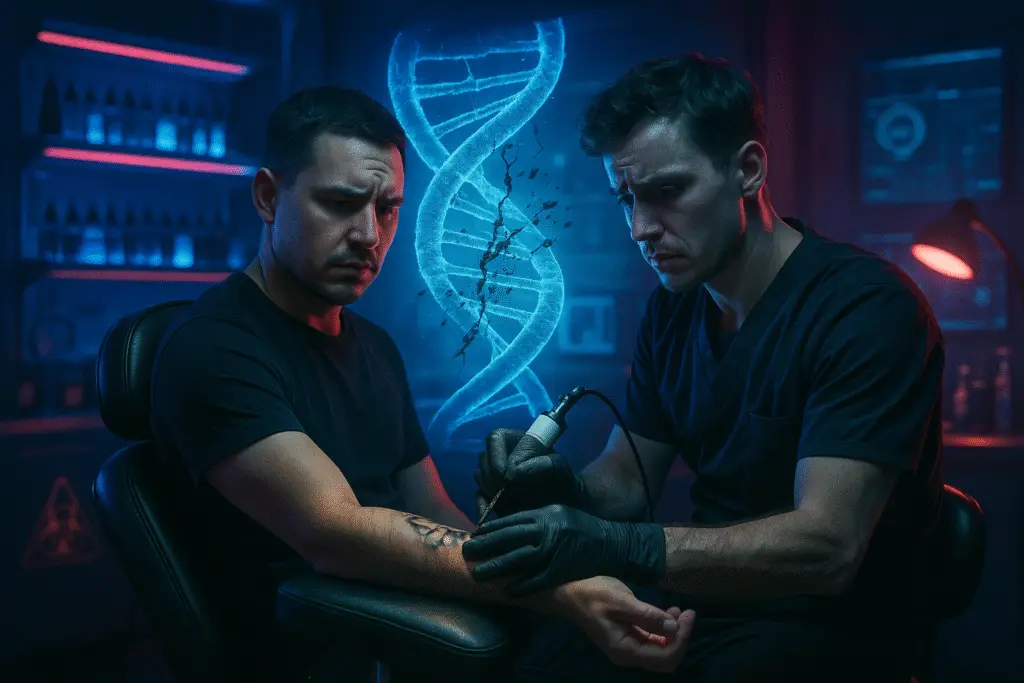Discover how ingredients commonly found in street-style Chinese food—like Ajinomoto, artificial food colors, microplastics, and additives—may harm your DNA and impact long-term health.
We ordered ‘some’ Indian-style Chinese food— “Manchurian with gravy” from a food delivery app, and the parcel just got delivered. But here’s the question: Is the food and its ingredients safe for our DNA?
Let’s find out.
Key Topics:
What’s inside the food bag?

The food comes in the world’s most unwanted invention— the polythene bag. And honestly, the damage starts from here.
A polythene bag contains polyethylene and chemicals like BPA (Bisphenol A) and PFAS (per- and polyfluoroalkyl substances). These two chemicals lead to hormonal imbalance, and developmental and reproductive issues, and consequently alter gene expression directly.
Studies showed that these compounds also alter DNA methylation patterns and negatively affect our epigenetics.
Moving ahead.
A nice aroma is coming out of the pack, but it’s too hot. Our Indian-style Chinese food is inside a premium plastic box. Yes, plastic again— but this time, it’s even worse.
Hot food alters plastic’s chemical properties and releases chemicals like Phthalates, BPA, styrene, microplastic and nanoplastic in our food. As explained, such chemicals are endocrine disruptors and produce a hormonal imbalance.
Resultantly, it alters our epigenetic regulation. Particles like microplastics can even cause DNA damage and strand breaks.
Now let’s open the food box and transfer it into a bowl.
The food aroma is intense and tempting, and the food looks delicious. But… The red color!
Manchurian balls are dyed bright red – unnecessarily, I must add. But it’s a common habit among street-style Chinese food vendors in India.
This is where things start to get seriously concerning.
The red food color in Chinese food or Manchurian is either sunset yellow (E110), Carmoisine (E122), Allura red (E129), or Red 40. Furthermore, our sources revealed some disturbing truths.
In some low settings, vendors use non-food-grade color or even textile dyes. Such chemicals are illegal and toxic.
At a genetic level, it causes genotoxicity (unwanted DNA breaks and mutations), oxidative DNA stress and impaired DNA repair system as well. These chemicals are potent in causing cancer and developmental problems in children.
Studies show that in children it causes hyperactivity, attention disorder and neurodevelopmental DNA damage. A study on mice showed that it can even damage DNA in bone marrow cells.
Another study published in Toxicology Reports (2020) revealed that sunset yellow and carmoisine produce micronuclei and generate chromosomal aberrations and genetic instability.
I’m not interested in tasting the food now, literally! But let’s do it.
I took a small bite from one Manchurian ball and tasted it. And guess what, I got what I expected, Monosodium glutamate. Don’t know!
—Ajinomoto, the tempting umami flavor in Chinese food.
We all know about it, it’s bad… actually… worse. Lab studies showed that it is potentially neurotoxic, causing DNA fragmentation and cell death.
Oh, and let’s not forget the deep-fried manchurian, made from low-quality, repeatedly used oil. Deep-frying produces compounds like acrolein, PAHs and obvious trans-fat.
These are strong mutagens that break our DNA and produce mutations. This leads to unwanted genetic abnormalities, for instance, cancer.
It won’t even stop here, certain mutations and epigenetic alterations can be inherited to next generations and produce developmental, mental and neurological abnormalities in the fetus.
In addition, the low-quality soya sauce, preservatives, baking soda, and refined flour (maida) and other flavor enhancers also have negative health-associated consequences including digestive, mental, genetic and developmental issues.
Our cellular mechanisms…
We have a well-established and different type of DNA repair system that works fine in normal conditions. Meaning, our DNA tried its level best to repair all the unwanted casualties.
But DNA has to deal with other things as well, not only food, for instance— bad mood, mental problems, addictions, environment, pollution, etc. It has to repair damages done by all these factors, and many others too.
It is like throwing thousands of arrows on a single shield– the system can’t handle that much damage. Worse, some mutagens can even directly attack the DNA repair mechanisms and disrupt them.
So what happens when that damage goes unchecked?
Once a mutation is settled, it starts showing the consequences and the most common one is cancer. Now, you know why the cancer numbers are so high in this generation.
And mark my words, it’s only going to get worse, year after year. Our food choices are one among those many contributors to this.
What can we do?
- Make food at home. Use natural colors like beetroot or Kashmiri chili, it is low in spice index and high in red color.
- Don’t use MSG (Ajinomoto), you can try tomato or mushroom umami.
- Use natural and iodized salt.
- Store or collect food only in glass or steel containers.
- Avoid market-side deep-fried food, and use homemade and air-fried food.
Wrapping up:
It is nearly impossible to fully protect our DNA from all the mutagens in this rapidly developing and polluted era. That’s uncontrollable.
But we can work on the controllable. Food choice is one of the controllable factors. Making informed choices about food and lifestyle can significantly contribute to improving and restoring our genetic health.
Sources:
Khan, I. S., Ali, Md. N., Hamid, R., & Ganie, S. A. (2020). Genotoxic effect of two commonly used food dyes metanil yellow and carmoisine using Allium cepa L. as indicator. Toxicology Reports, 7, 370–375. https://doi.org/10.1016/j.toxrep.2020.02.009.
Tang, D. (2025). Genotoxicity of Microplastics on Living Organisms: Effects on Chromosomes, DNA and Gene Expression. Environments, 12(1), 10–10.
Ataseven, N., Yüzbaşıoğlu, D., Keskin, A. Ç., & Ünal, F. (2016). Genotoxicity of monosodium glutamate. Food and Chemical Toxicology, 91, 8–18. https://doi.org/10.1016/j.fct.2016.02.021.



Very rapidly this website will be famous among all blog
people, due to it’s nice content